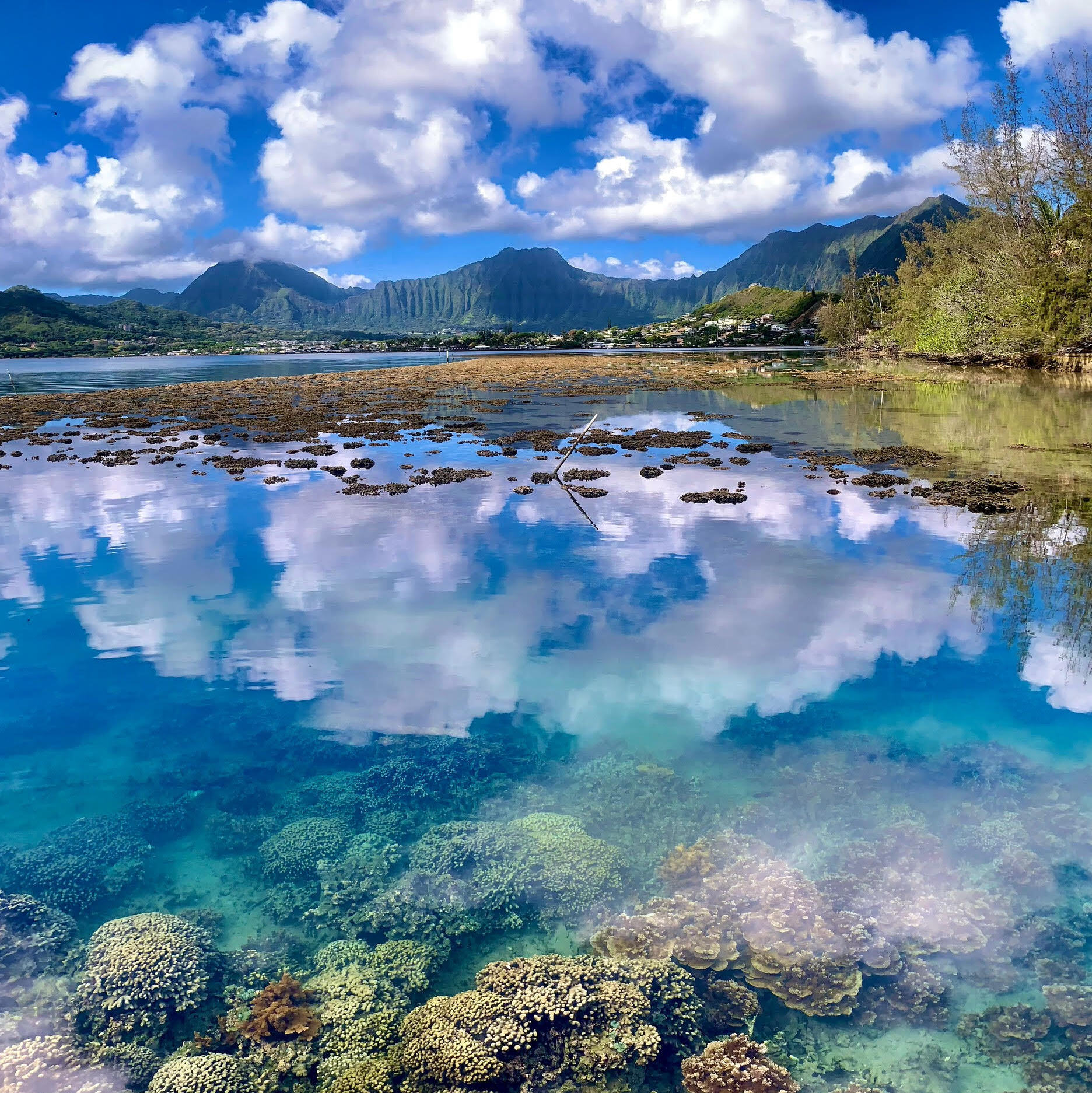$4M for marine carbon removal projects could revolutionize climate mitigation, conservation
 Coral Reef off the coast of Coconut Island in Kāneʻohe. Photo by Keisha Bahr
Coral Reef off the coast of Coconut Island in Kāneʻohe. Photo by Keisha Bahr
At the nexus of ecosystem conservation and climate mitigation, two groundbreaking research projects led by University of Hawai‘i at Mānoa oceanographers received funding totaling nearly $4 million from the National Oceanographic Partnership Program (NOPP). The pioneering research is poised to transform the understanding of ocean alkalinity enhancement, a potential ocean-based tool to remove carbon dioxide from the atmosphere.
The projects are among 17 funded through the recent NOPP investment to better understand marine carbon dioxide removal for mitigating climate change and ocean acidification. Led by the National Oceanographic and Atmospheric Administration (NOAA), NOPP facilitates partnerships between federal agencies, academia, and industry to advance ocean science research and education.
Effects of ocean alkalinity enhancement on corals
Led by Melissa Meléndez, oceanography researcher in the UH Mānoa School of Ocean and Earth Science and Technology, a team of diverse oceanographers from UH Mānoa, Texas A&M University-Corpus Christi, and NOAA’s Pacific Islands Fisheries Science Center, will assess how coral and crustose coralline algae respond to the innovative approach to removing carbon dioxide from the ocean. The technique, referred to as ocean alkalinity enhancement, involves the addition of substances like quicklime to seawater to enhance the ocean’s capacity to buffer ocean acidification and potentially increase the ocean’s ability to absorb more carbon dioxide from the atmosphere.
Supported by nearly $2 million in funding from the U.S. Department of Energy’s Office of Fossil Energy and Carbon Management, the effort seeks to unravel the potential benefits and intricacies of leveraging ocean alkalinity enhancement as a potent tool.
“Our project aims to provide a comprehensive understanding of the potential benefits and limitations of ocean alkalinity enhancement, particularly in the context of safeguarding the health of corals,” said Meléndez. “Understanding the intricate balance between alkalinity additions and coral response will contribute to developing effective and informed strategies for mitigating the impacts of climate change and ocean acidification.”
During the three-year project, the team of experts will be studying the response of Pacific tropical and subtropical corals and crustose coralline algae to changes in water chemistry in controlled experiments using various alkalinity enhancement agents, including calcium oxide (quicklime), silicate minerals (olivine), and sodium hydroxide, to simulate different ocean alkalinity enhancement scenarios at the Hawai‘i Institute of Marine Biology (HIMB) in SOEST.
“We stand at the forefront of comprehending the potential success and consequences of marine carbon dioxide removal on coral reefs,” added Keisha Bahr, lead investigator at TAMU-CC. “Our interdisciplinary team enables us to delve into critical questions surrounding alkalinity enhancement methodologies and their implications for both corals and coralline algae.”
As part of its mission to foster broader engagement, the research team will provide training opportunities for underrepresented individuals, community members, and early-career researchers. This dedication to inclusivity aligns with the project’s broader goal of promoting equity within the marine carbon dioxide removal field.
Testing the possibility of mitigating climate change
Assessing the efficacy and efficiency of ocean alkalinity enhancement are essential steps to ensuring that this method of carbon dioxide removal can contribute to mitigating climate change and ocean acidification. The second project, led by oceanography professor David Ho, aims to do just that.
With the $1.9 million award from NOAA and ClimateWorks Foundation, Ho and collaborators from [C]Worthy, Ebb Carbon, UCLA, and American University will partner with the East Bay Municipal Utility District — which operates a wastewater treatment plant that discharges into San Francisco Bay — to conduct an experiment that adds alkalinity and tracers to ocean water to test its effect on removing carbon dioxide from the atmosphere.
Researchers will first use a computer modeling framework to design the experiment, including the release strategy and a sampling plan that will track effects in the environment. Following the experiment, the team will conduct an analysis that estimates the efficacy of the alkalinity release in removing carbon from the atmosphere.
“This project represents the first time an alkalinity release will be conducted along with the dual tracer technique and allows us the opportunity to determine the movement of CO2 between the ocean and atmosphere and track the evolution of an ocean alkalinity enhancement,” said Ho. “Also delivered through this effort is a demonstration of how we develop tools for monitoring, reporting, and verification of ocean carbon dioxide removal.”
The technical work will be accompanied by public engagement to introduce local community members, including tribes, non-governmental organizations, and community organizations, to the project. Engagement will explore how the project aligns with their views and priorities, and what associated risks and co-benefits these groups perceive.
“The projects that are part of this initiative not only hold promise for the advancement of coral reef restoration and conservation but also address the urgent need for sustainable solutions to combat climate change and its impact on marine ecosystems,” said Meléndez. “As the project unfolds, it is expected to provide valuable insights that contribute to shaping the future of marine carbon removal and ocean acidification mitigation strategies.”
Read also on UH News.




